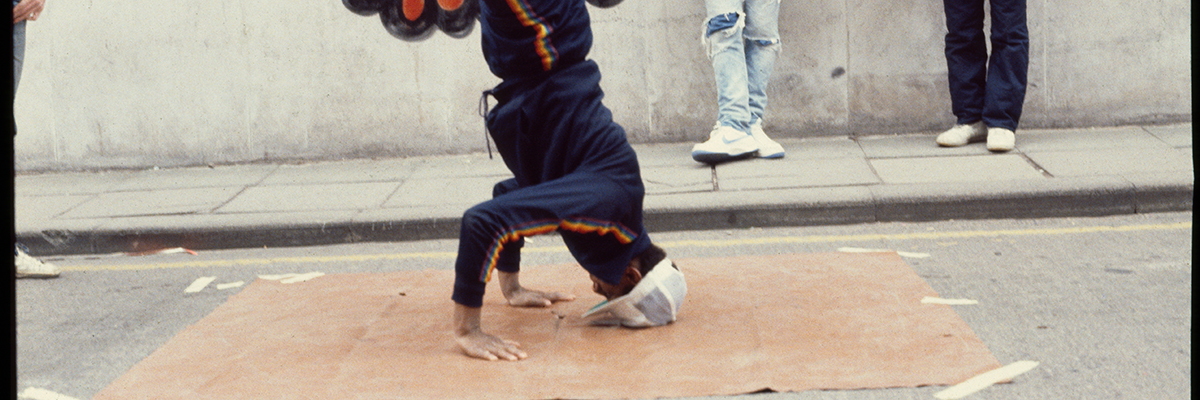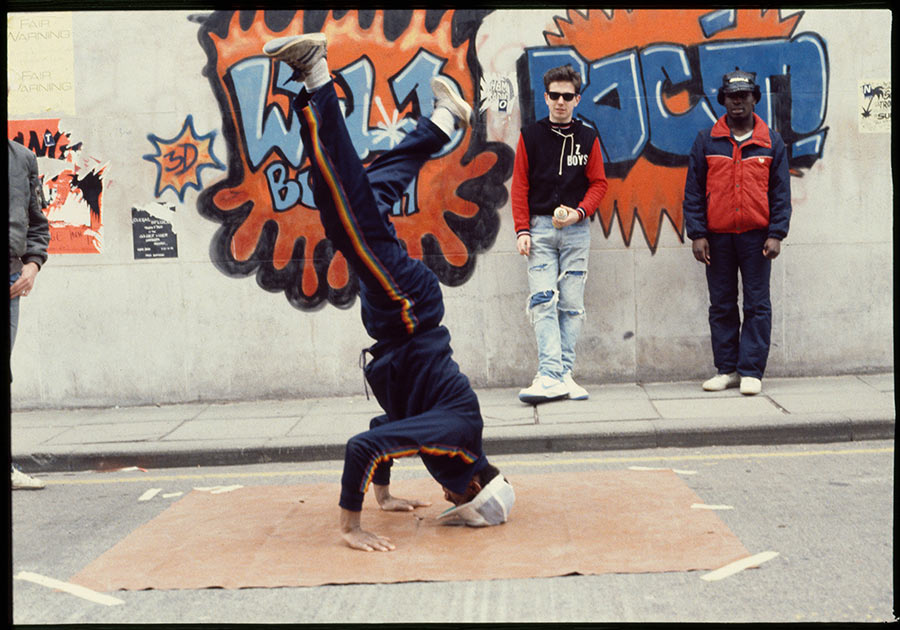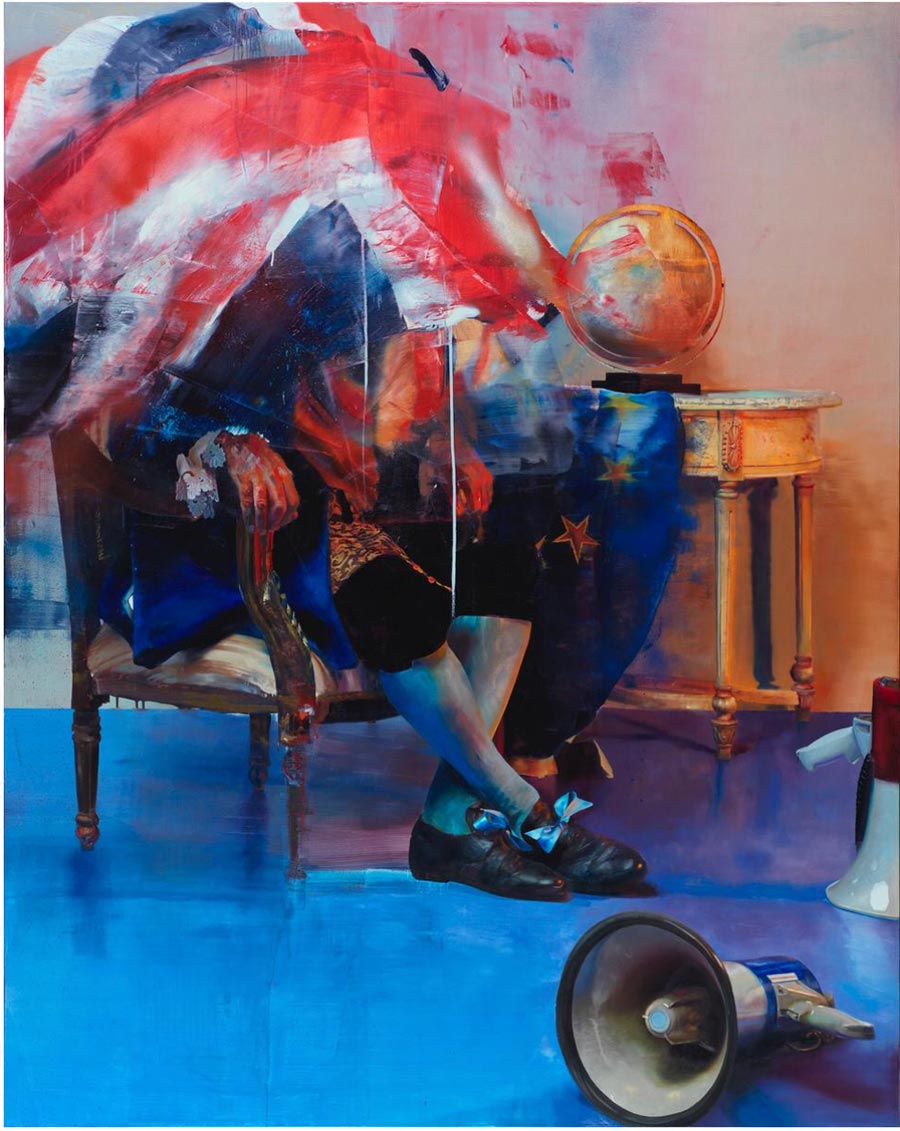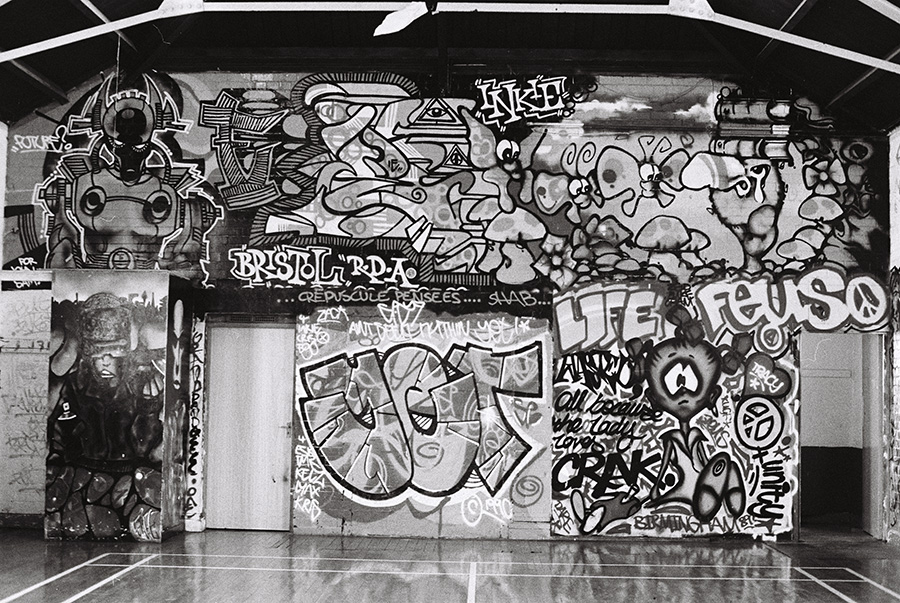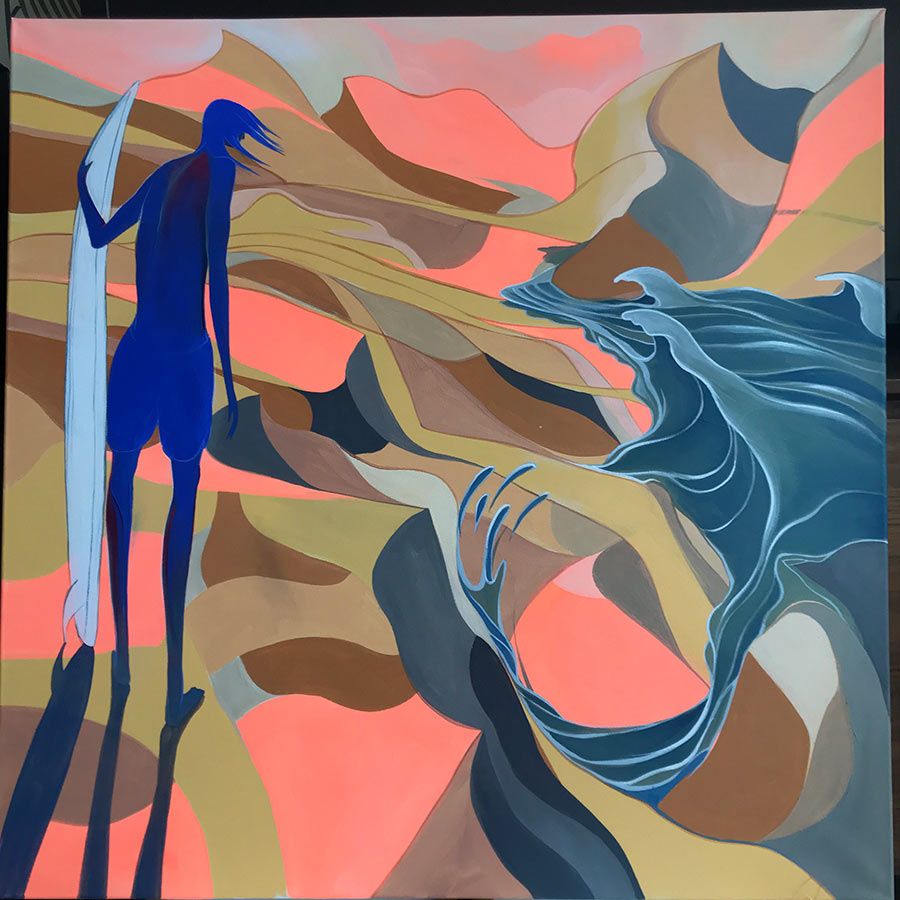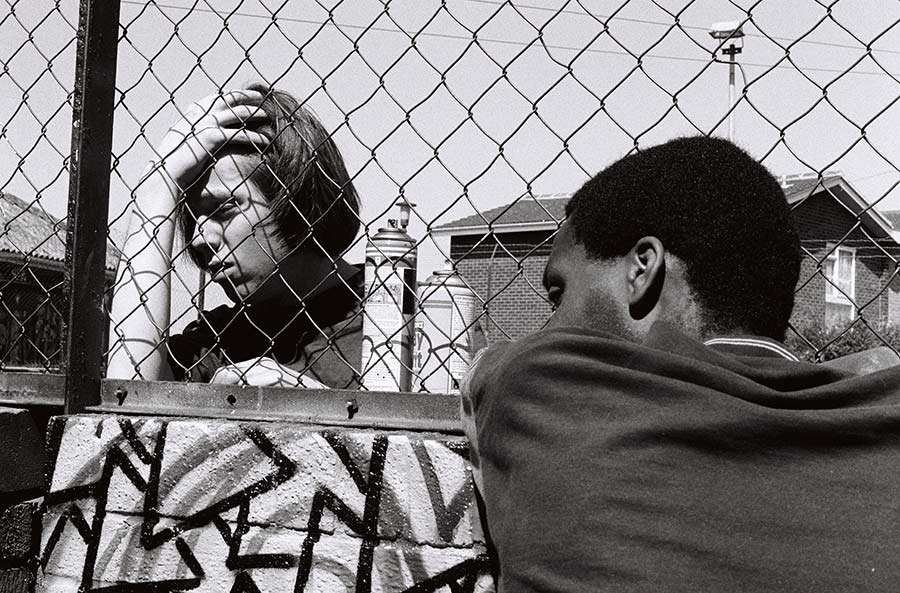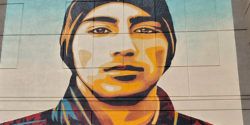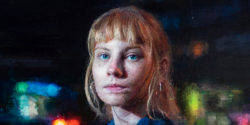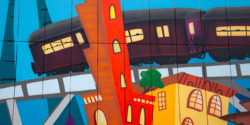A place you may not have heard of, Réunion Island has quickly become a remarkable hotspot for urban art, largely due to the Réunion Graffiti Festival. This annual gathering showcases a rich range of talent from graffiti and street art communities worldwide, offering something refreshingly unique for this type of festival.
Eko, the festival’s founder, extends an open invitation: “Come to Réunion, see the artists, see the walls, and the beautiful city.”
Born in 1976 on Réunion Island, Eko began his graffiti journey in 1989, inspired by hip-hop culture and gaining recognition under the tag “Saphir.” As one of the pioneers of graffiti on the island, he collaborated with local crews like SRD (Syndicat du Rap Dionysien) and later joined LSA (Le Syndicat des Artistes). Eko’s creative reach extends beyond graffiti to music and performance, and his time in mainland France deepened his appreciation for Réunion’s vibrant culture, which he was eager to elevate upon his return.
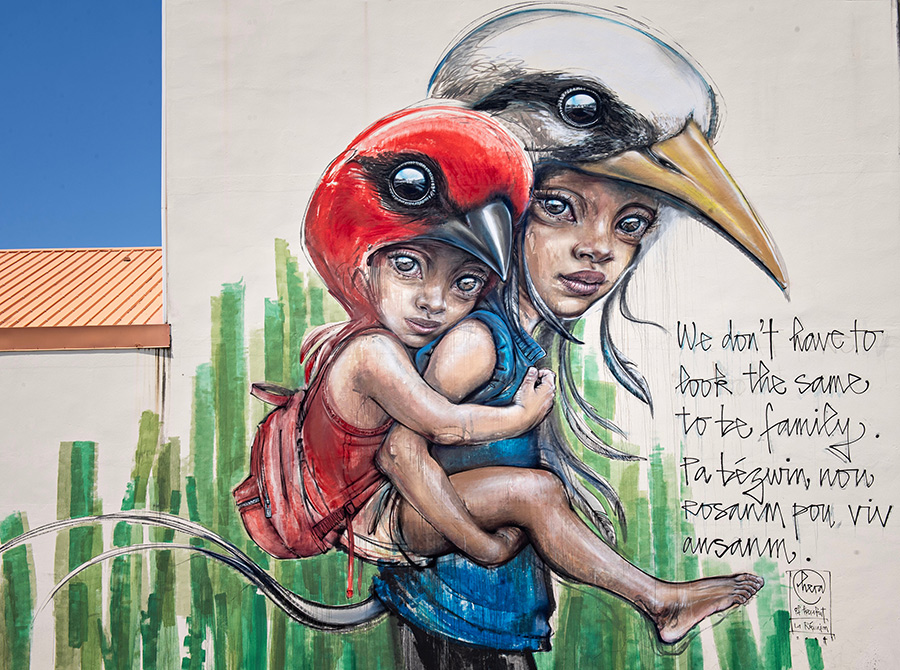
With respect for his homeland and a vision of global recognition, Eko founded the Réunion Graffiti Festival in 2019. Each year, the festival expands, now including an impressive lineup of international and local artists, community-focused programs, and interactive events for diverse audiences.
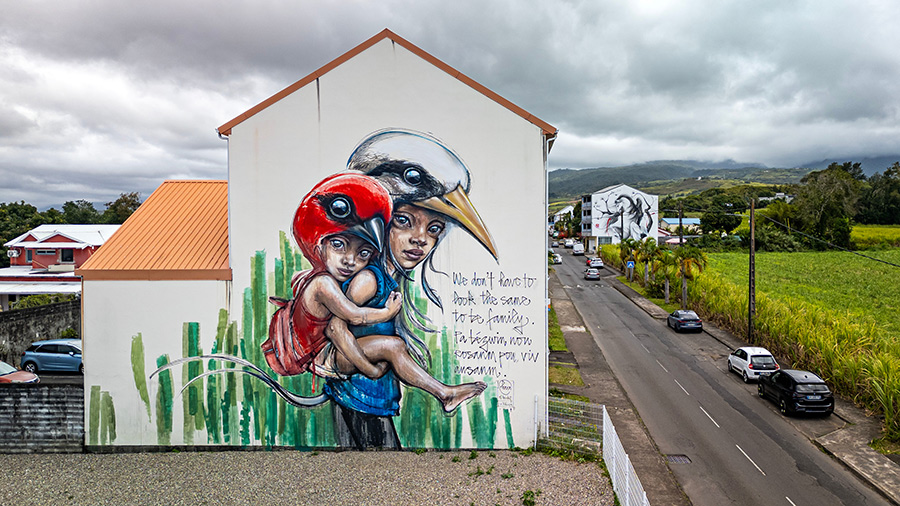
A French overseas department in the Indian Ocean, Réunion is located approximately 679 km east of Madagascar and 175 km southwest of Mauritius. Known for its stunning volcanic landscapes, including the active Piton de la Fournaise, Réunion is home to about 885,700 residents. The island’s unique blend of French, African, and Indian influences is evident in its culture, cuisine, and language, with Réunion Creole widely spoken alongside French. Since 1946, it has been governed as a French region, making it one of the European Union’s outermost regions and a part of the eurozone. This blend of European governance and Creole heritage gives Réunion its distinct identity, celebrated through its music, arts, and now, street art.
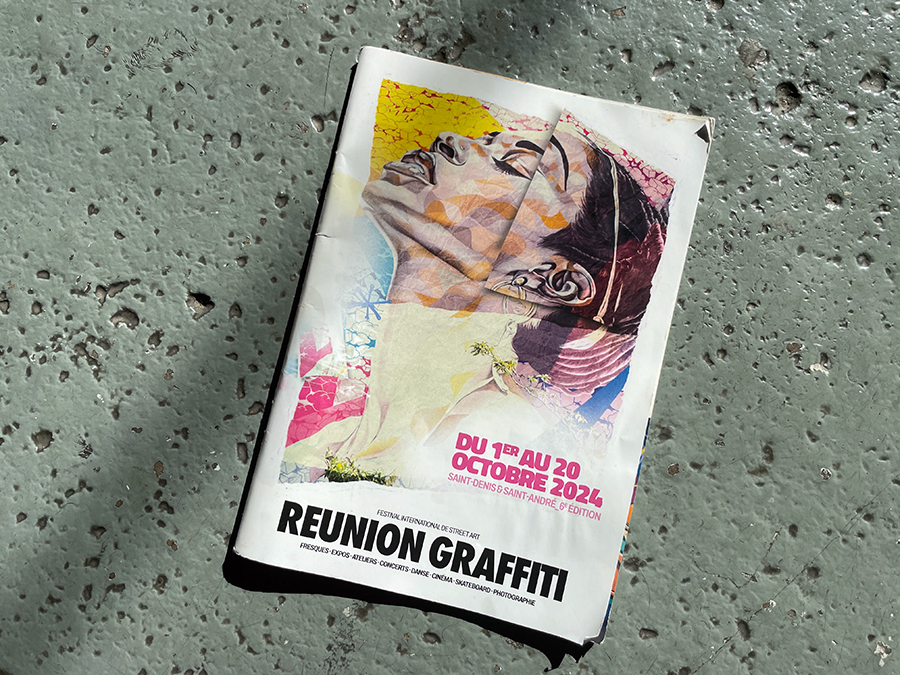
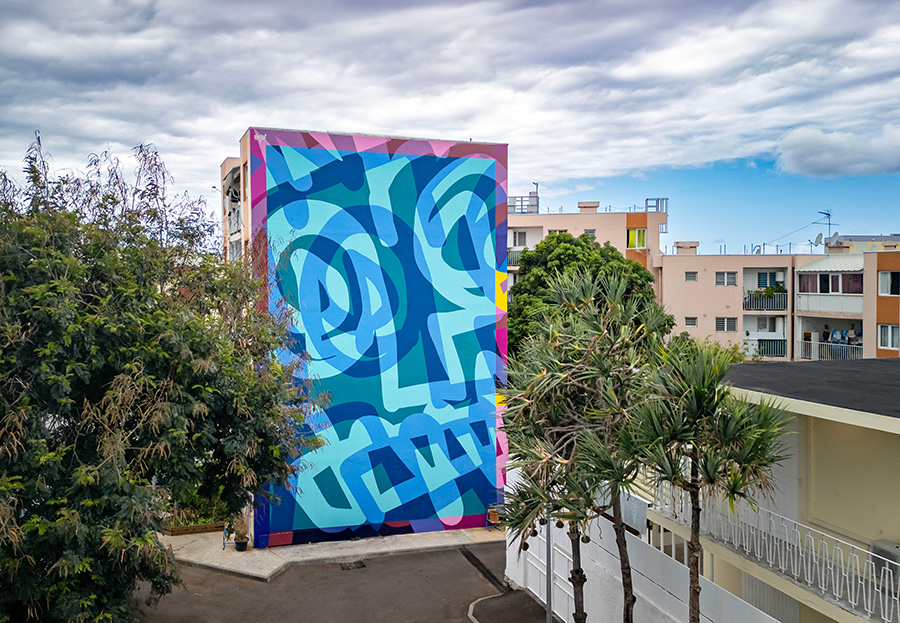
Since its inception, the festival has showcased global talent across graffiti and street art practices, hosting more than 100 artists, including renowned figures from countries such as Germany, Argentina, Spain, the U.S., India, Italy, Japan, Senegal, Switzerland, and Togo. This mix brings a dynamic blend of styles, reinforcing the island’s position as a hub for global urban art.
A key feature is Graff Park in Saint-Denis, a dedicated space for free expression where artists—from beginners to veterans—can experiment and showcase their work. Supported by both public and private funds, the festival emphasizes inclusivity, offering community workshops, recreational activities, and sessions that help budding artists learn techniques and connect with mentors.
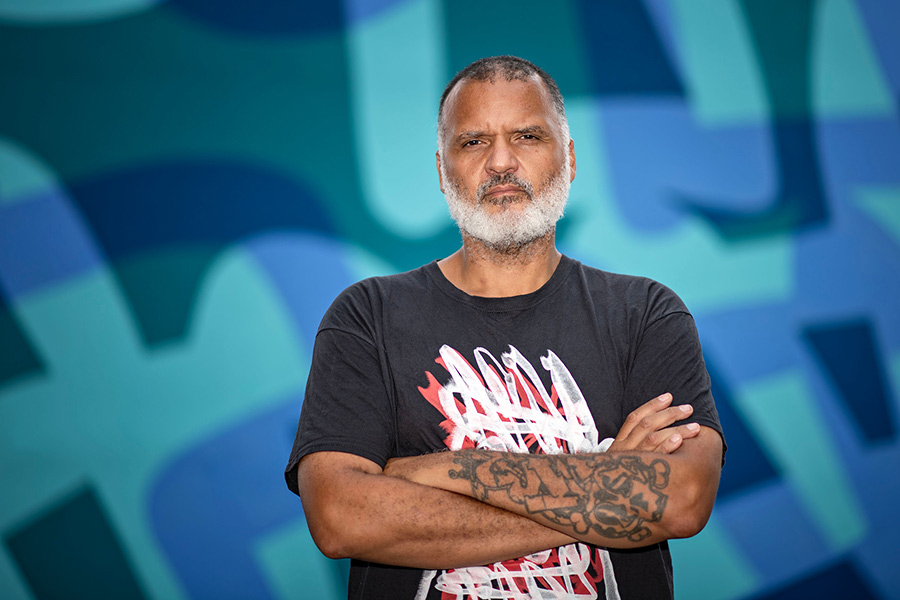
Beyond murals, the festival highlights Réunion’s cultural vibrancy with exhibitions, live music, and dance battles. These programs blend local talent with international flair, complemented by Acts, an outreach initiative that provides regular updates and information on Réunion’s street art scene. This effort helps keep art enthusiasts connected to the evolving urban landscape on the island.
This year, renowned photographers Martha Cooper and Nika Kramer were honored guests, hosting a symposium to discuss their work documenting the hip-hop scene over many decades. New images of Réunion’s street art were captured, and Ms. Kramer conducted interviews with participants, further enriching the festival’s archive and legacy.
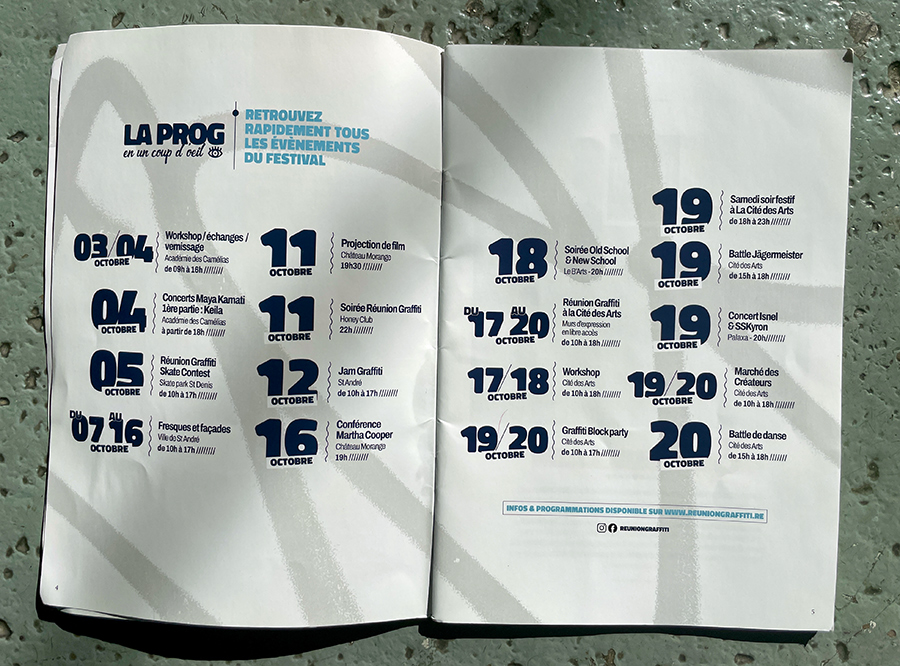
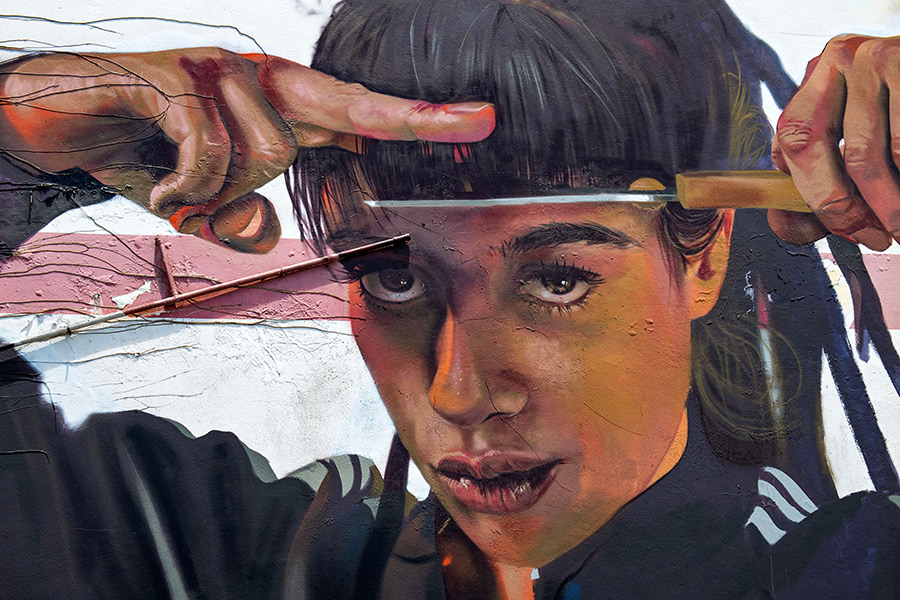
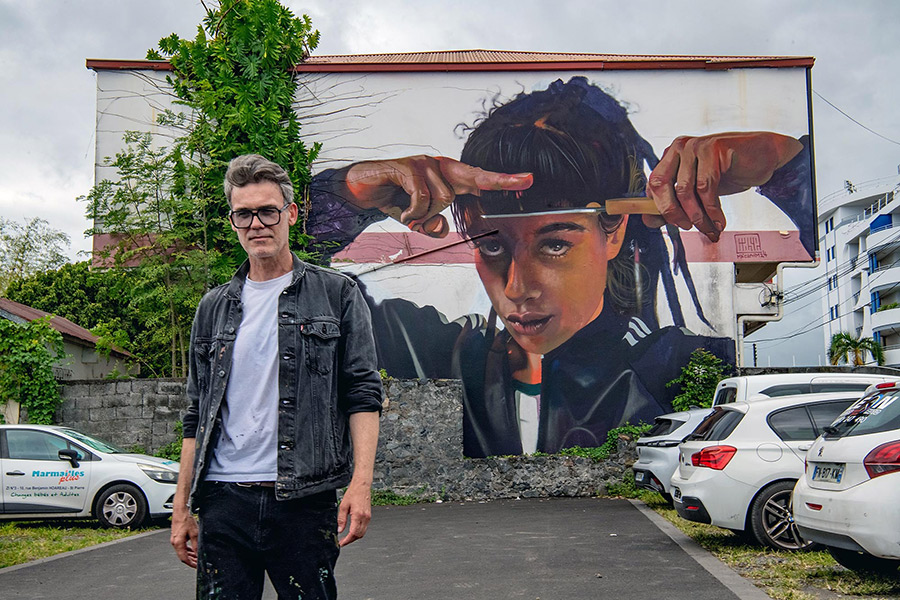
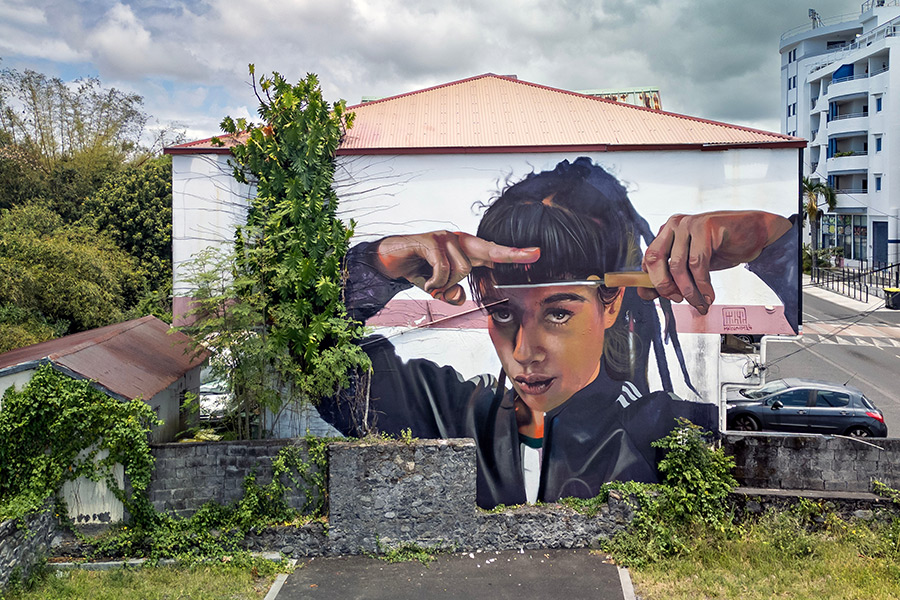
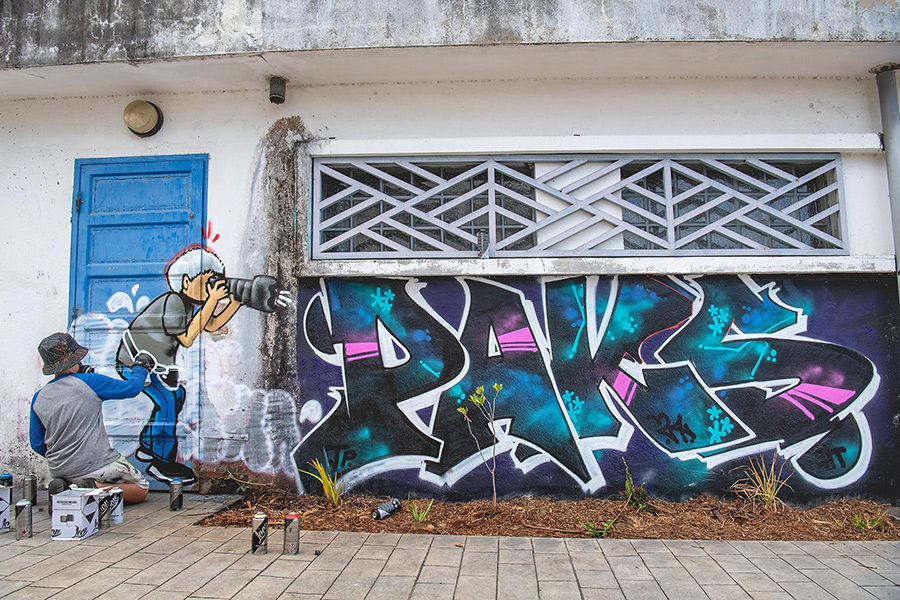
From conversation with Nika Kramer, we learn that a young enthusiastic fan of the work of photographer Martha Cooper was not only attending, but participating in the painting of walls this year at the festival. One of the youngest graffiti writers interviewed for BSA, Patcha Pax shares personally his experience here for BSA readers. Afterward is a full interview with the writer by Nika Kramer.
“I knew Martha Cooper before I met her. I had seen a report about her and the 1UP on YouTube, and my mom gave me Subway Art for Christmas 2022. So when I saw that Martha Cooper was coming to the Graffiti Reunion this year, I jumped for joy! My mom signed us up for the conference right away.
I know what Martha Cooper has done so well that during the conference, I answered the questions that Olivier Cachin asked before she did.
I also was very familiar with the 1UP video that was shown.
Meeting her was incredible because I felt as if I was living through her moments with the vandal graffiti artists, especially the 1UP crew. In my mind, I was running with her and them to secretly paint on the subways. It was like touching the real world of graffiti with my fingertips.
I saw that there was still room on the wall.
I saw MC taking a picture of Miaou, so I decided to take a photo of her and reproduce the drawing on the wall. A photograph captures a moment for a lifetime… it was my way of capturing this moment forever. It is painted forever on the wall. And so every time I see this graffiti, I will think back to that moment when MC was there, that she was taking pictures of all of us. And also of the moment when Sally and you were taking a picture of her in front of my Graffiti of her. It brings back a lot of good memories forever.
For MC’s drawing, I think I wanted to please her by drawing her. It was a gift so that she would be happy”
~ PP
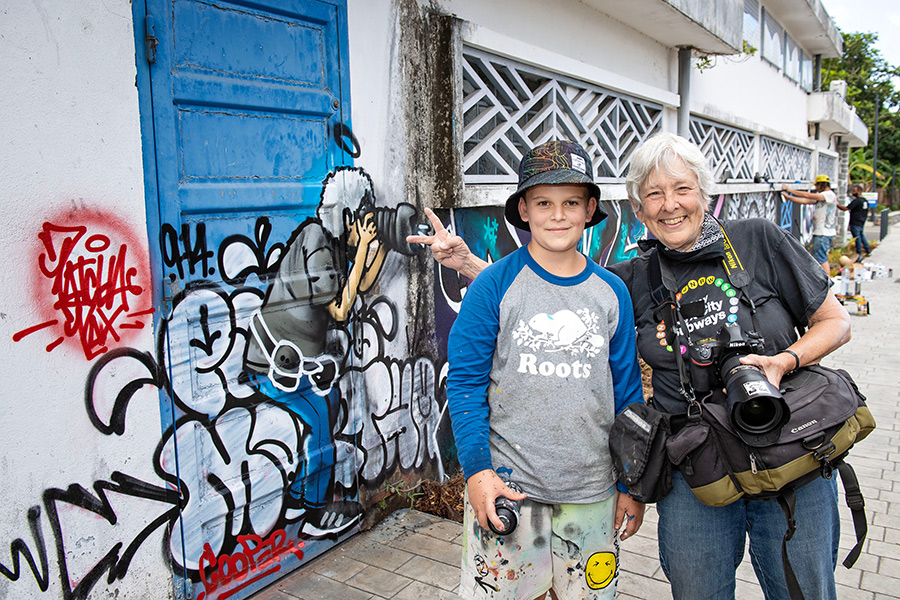
Nika Kramer interview with PATCHA PAX:
NK: When did you see graffiti for the first time?
PP: I first saw graffiti when I was 7 years old. I loved it straight away. I had to give a presentation in class and I chose the theme of Graffiti. So I asked Eko LSA by message on Instagram if he would be willing to come during my presentation. He accepted. It was the first time I met him.
NK: How did you get into graffiti
PP: I really got into graffiti when I went to see a graffiti festival for the first time, Le Réunion Graffiti in 2021. I saw all these artists painting on huge walls. I asked Eko if I could have one. He replied “train a lot and one day I promise you that you will have your wall”. The next day, I asked my mom to sign me up for drawing classes. Then I practiced whenever I could on paper and my garden wall.
NK: Why did you start writing PAKS?
PP: For my tag, I wanted a name that meant something positive. I searched for the word “Peace” in all languages. I found “Patcha” in Romani (India I think), “Pax” in Latin, and “PAKS” in Polish. So my name is Patcha Pax but I write it PAKS most often.
NK: What do you love about the graffiti scene in Réunion?
PP: In Réunion, I like the fact that there are many different styles of graffiti. I mainly like the lettering, like that of Arêm and Lego. But I also like certain drawings like those of Macak, Bayko, and Ador.
My mother immediately accepted my passion for graffiti because she always says that she prefers to see me express myself on walls outside rather than sitting for hours in front of a television screen. So she left me a huge wall in the garden to paint whatever I wanted.
My grandparents were not interested in graffiti at all, but now, when they travel, they look for graffiti walls in cities and send me photos. On Sundays, instead of watching television shows about cars, my grandpa watches videos about graffiti with me.
PP: So ! I think I answered all your questions. My vacation is almost over. I go back to school on Monday.
I was very sad at the end of the Réunion Graffiti Festival because it was an incredible week.
In 2 weeks I will be at the Run Colorz festival in St Louis so it will be awesome! I will send you photos if you want. I hope your vacation ended well in Réunion and you liked our island.
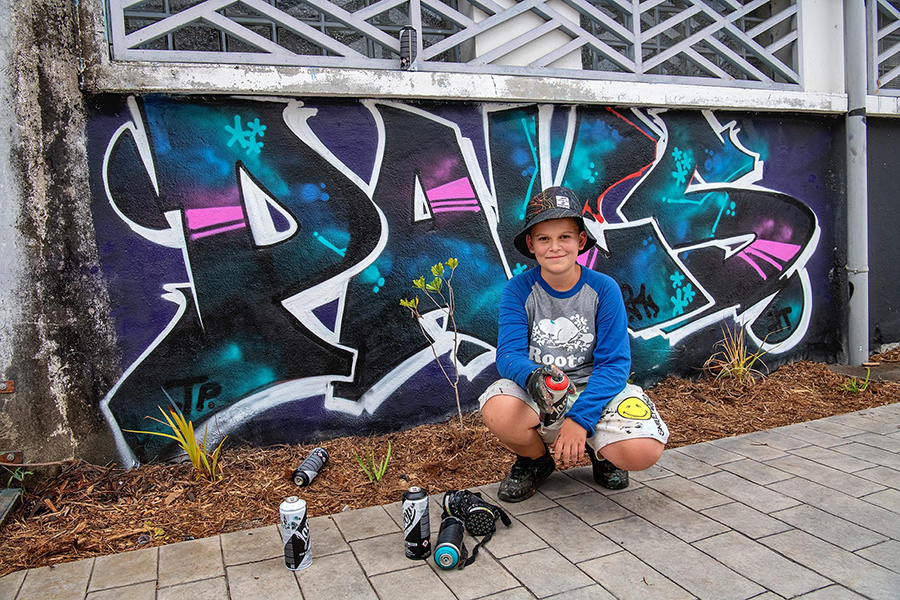
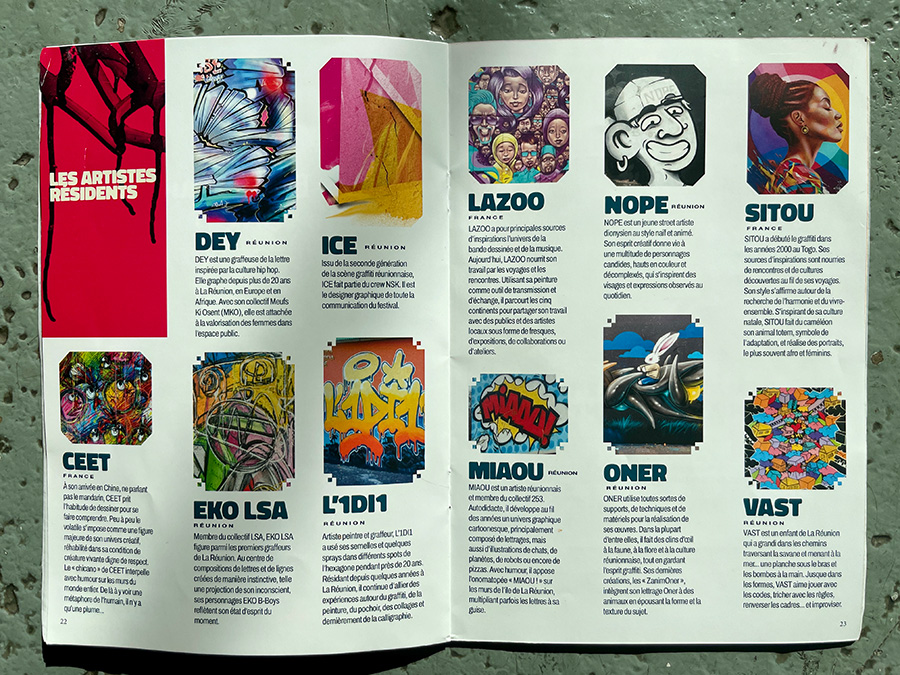
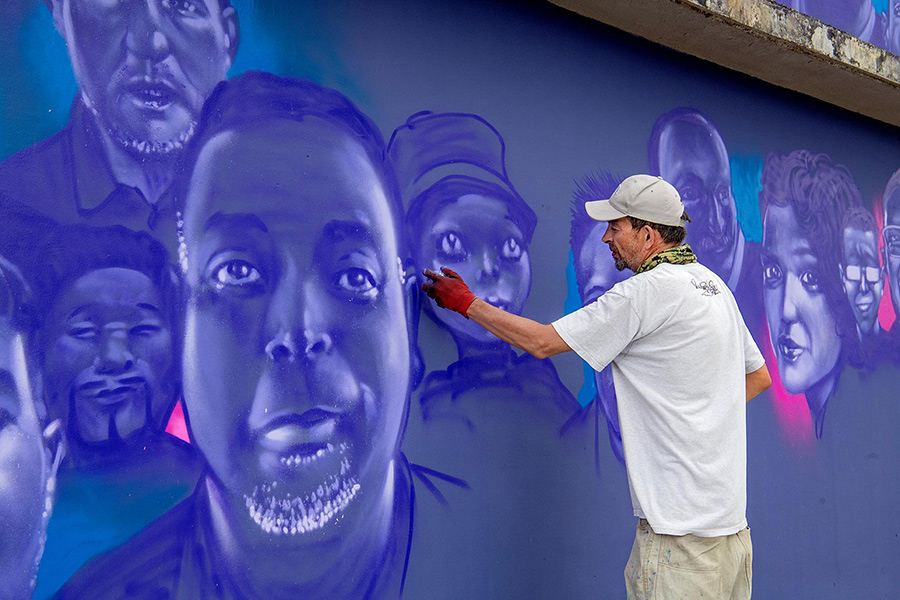
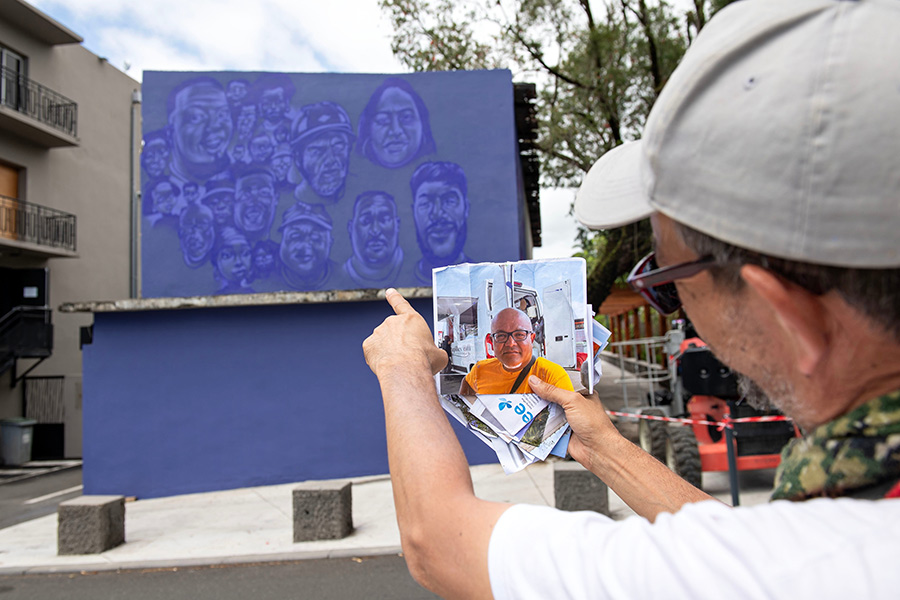
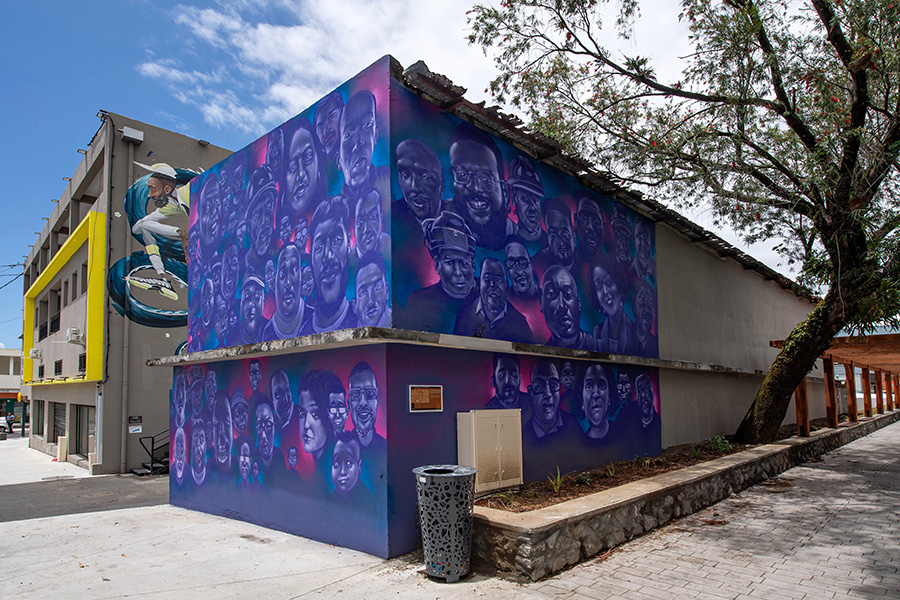
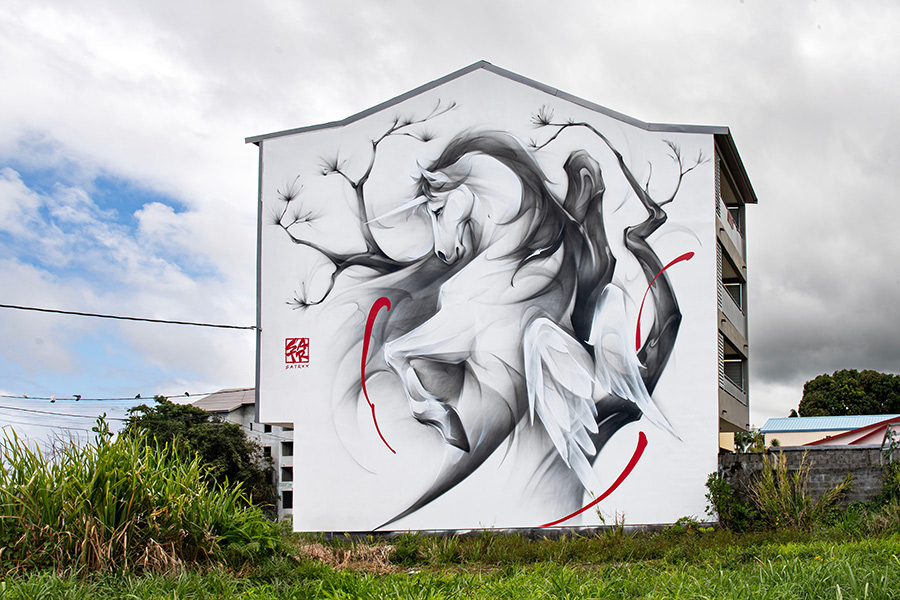
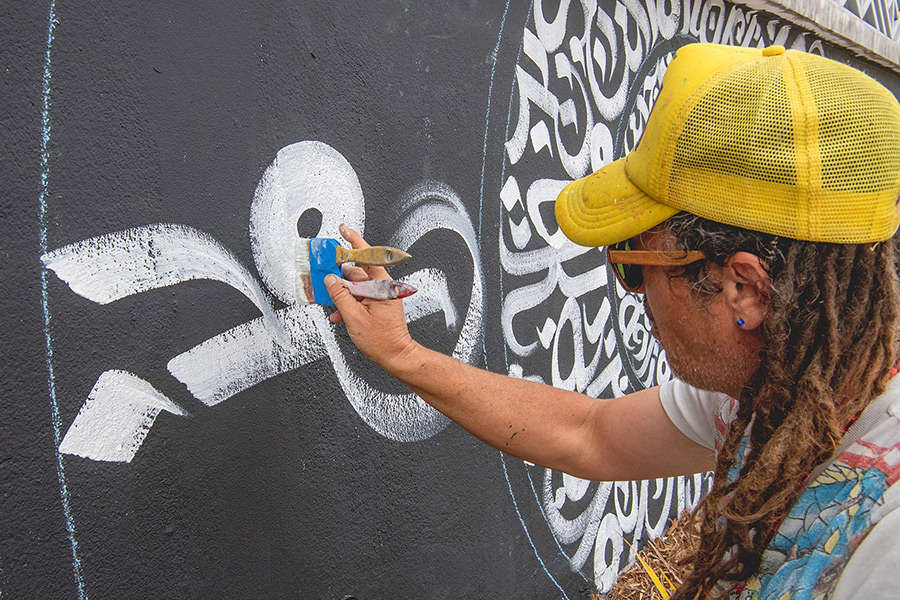
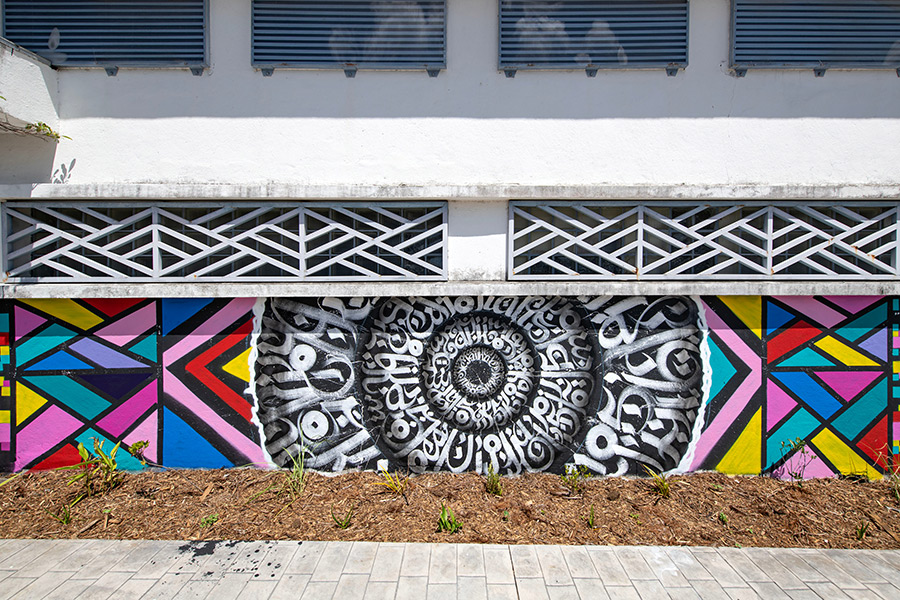
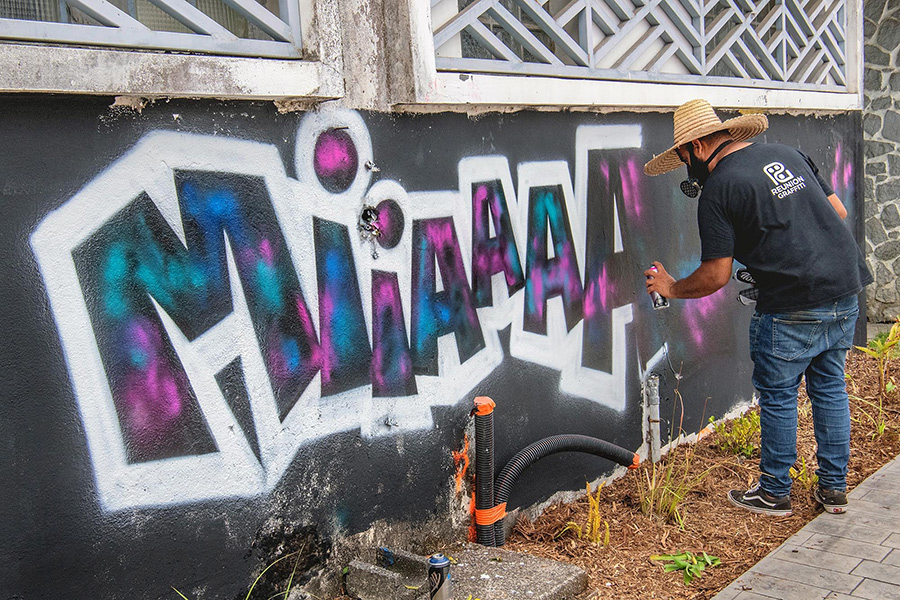
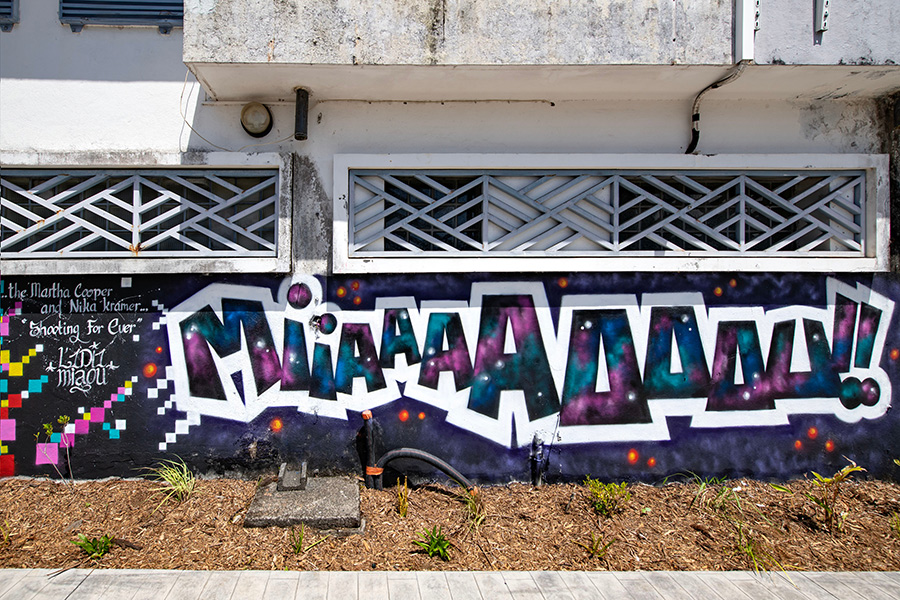
Nika Kramer interview with MIAOU:
NK: When did you see graffiti for the first time?
M: I discovered graffiti when I was in primary school, a little before the 2000s.The teacher gave us a lesson on prevention against damage, particularly graffiti. It had the opposite effect on me (ha, ha), On my way to school from home I started to spot all the graffiti, (a lot of “kope” tags at the time). But at that time, in Réunion, it was still mysterious. I didn’t understand much about it.
NK: How did YOU get into graffiti?
M: In 2005, a friend tagged it in my school notebook. I was impressed by his hand style, which was brutal, precise, and aesthetic. I immediately felt in love with this universe: since that day, graffiti has taken an important place in my life. I quickly started drawing, meeting people on the scene, testing the equipment, finding spots, and understanding the history behind this movement.
It was a brilliant passion for the teenager that I was: diving into a mysterious universe, where you had to make yourself known while remaining anonymous, where you had to come close to the forbidden just for the sake of painting,… Something to break the monotony of my days!
NK: Why did you start writing Miaou?
M: Miaou was my nickname as a child, so it was quite natural that I decided to use it on the wall. In the end, it’s cool because it’s also a fun and memorable name, which allowed me to stand out to people who aren’t necessarily from the graffiti scene.
NK: What do you love about the graffiti scene in Réunion?
M: The graffiti scene in Réunion is cool because you can paint in flip flops (ha ha)…
More seriously, the scene is constantly active and has nothing to envy from other countries. I find that there is a very good level on the island, regardless if you are getting up illegally or legally, in graffiti or street art. The fact that there are many players around challenges us to improve and to stay in the game. But this competition is healthy, we all know each other.
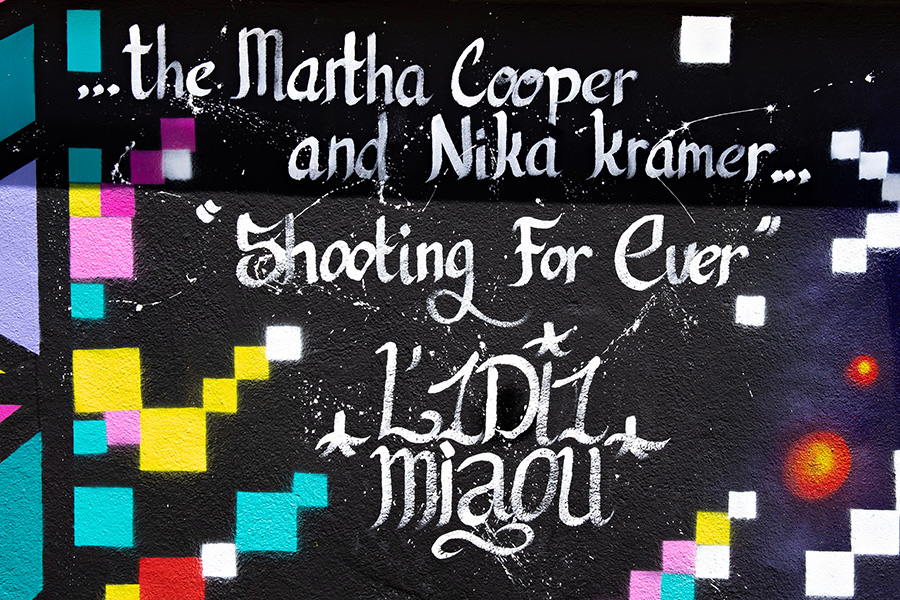
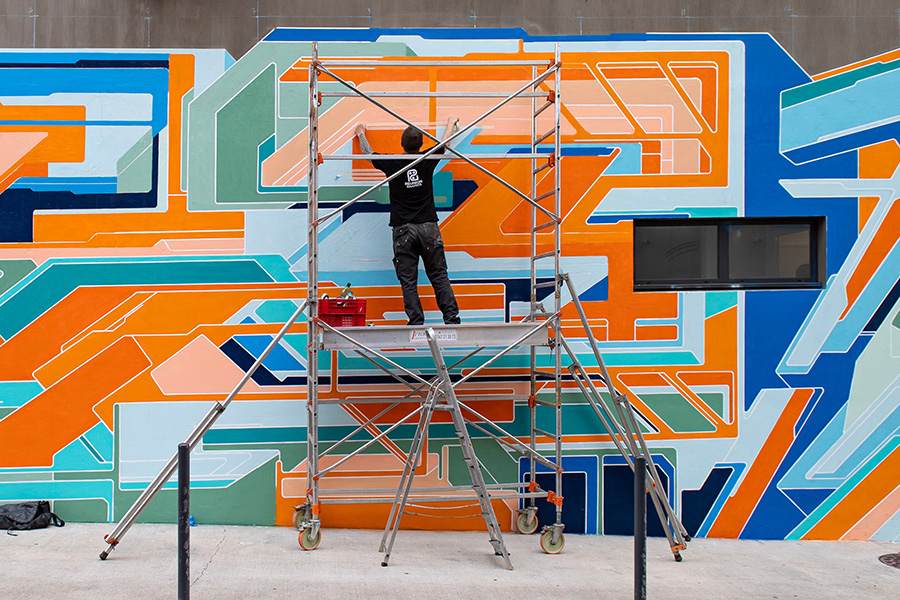
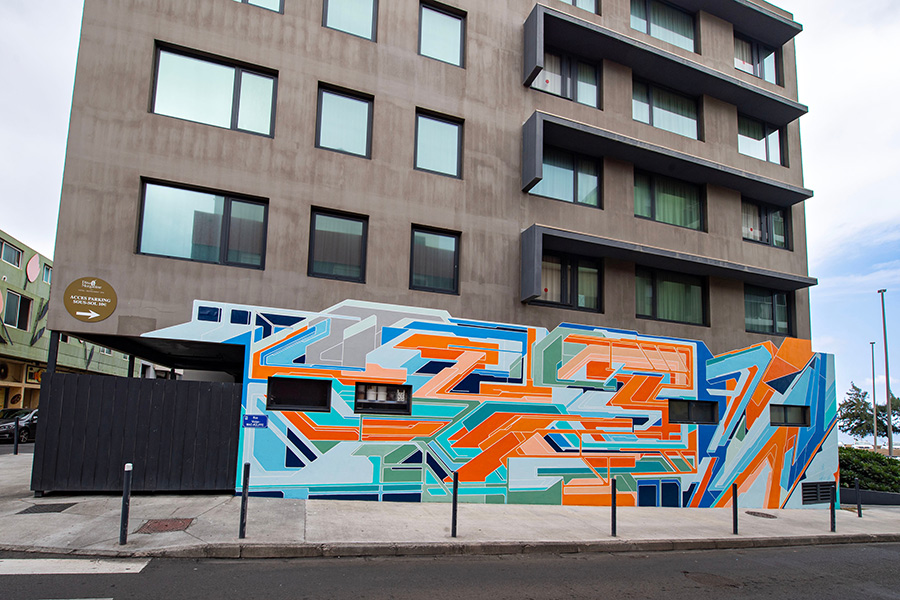
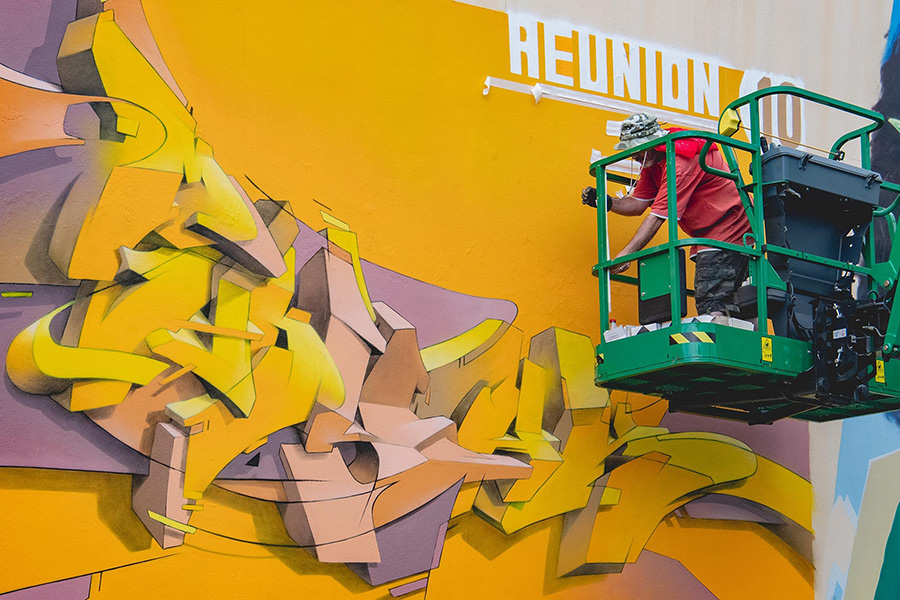
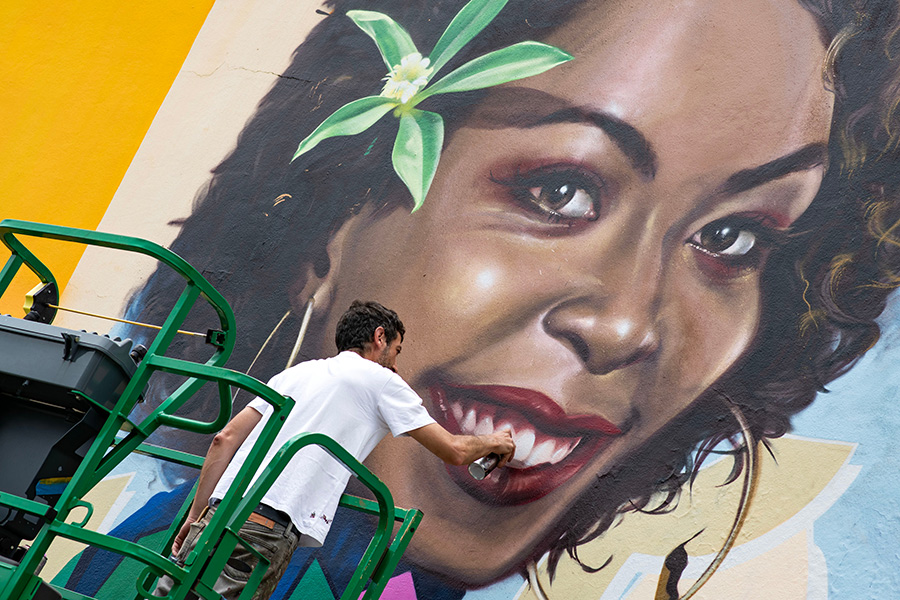
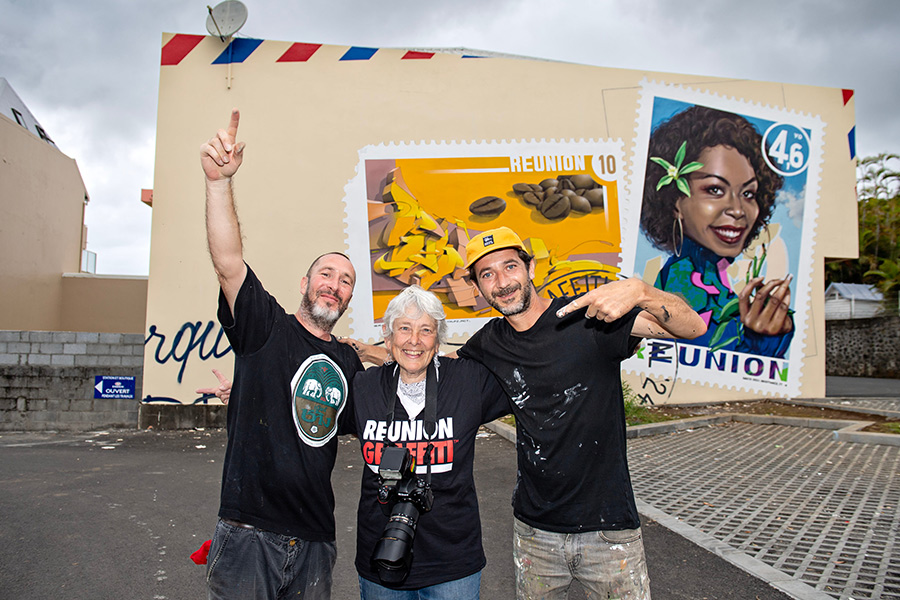
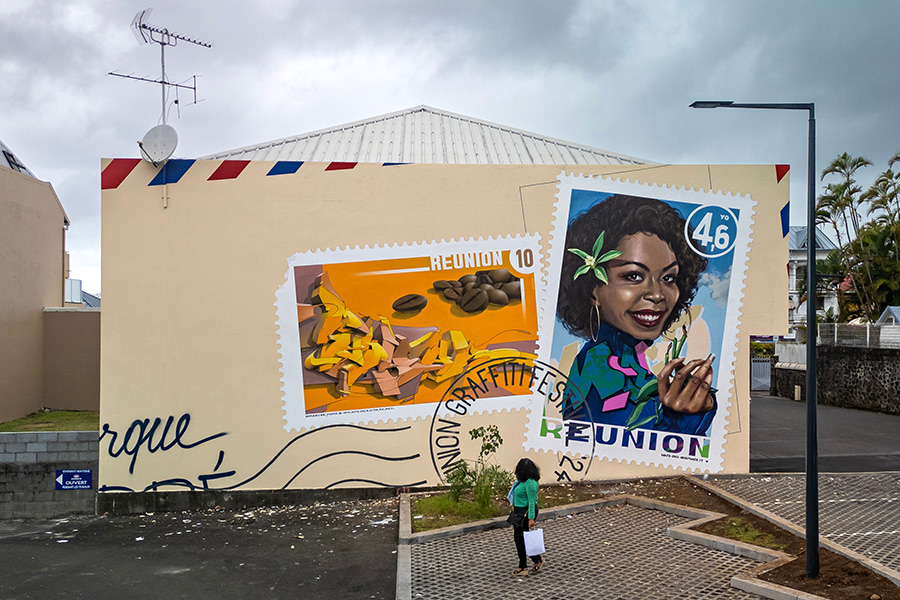
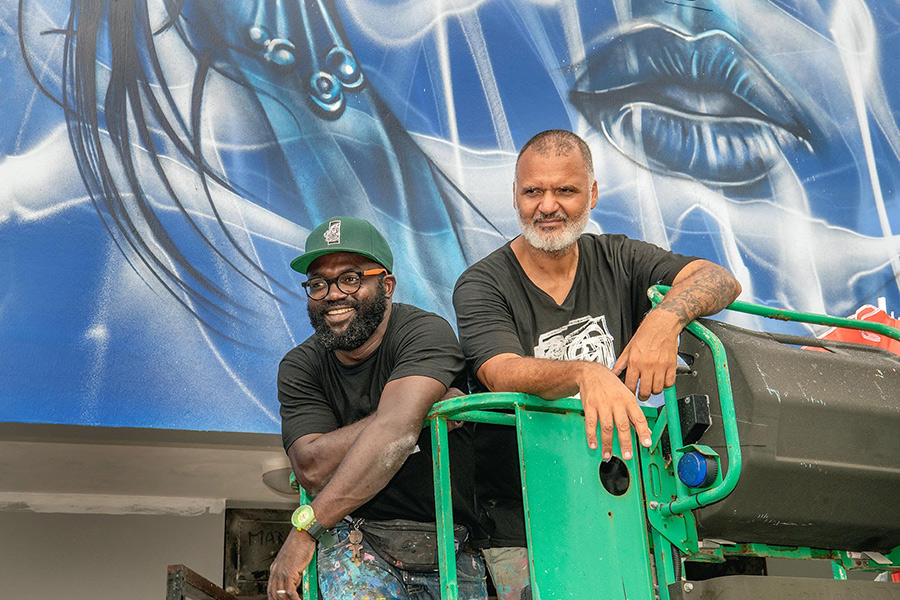
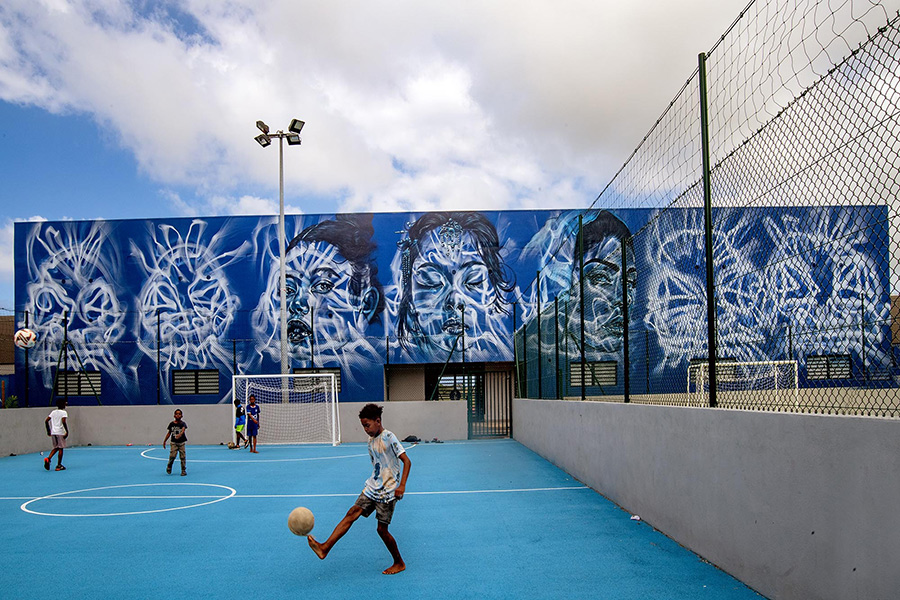
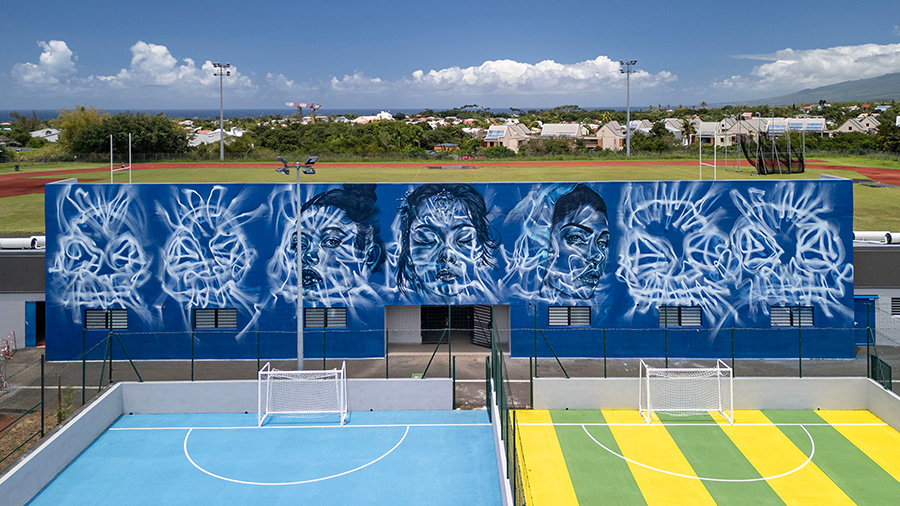
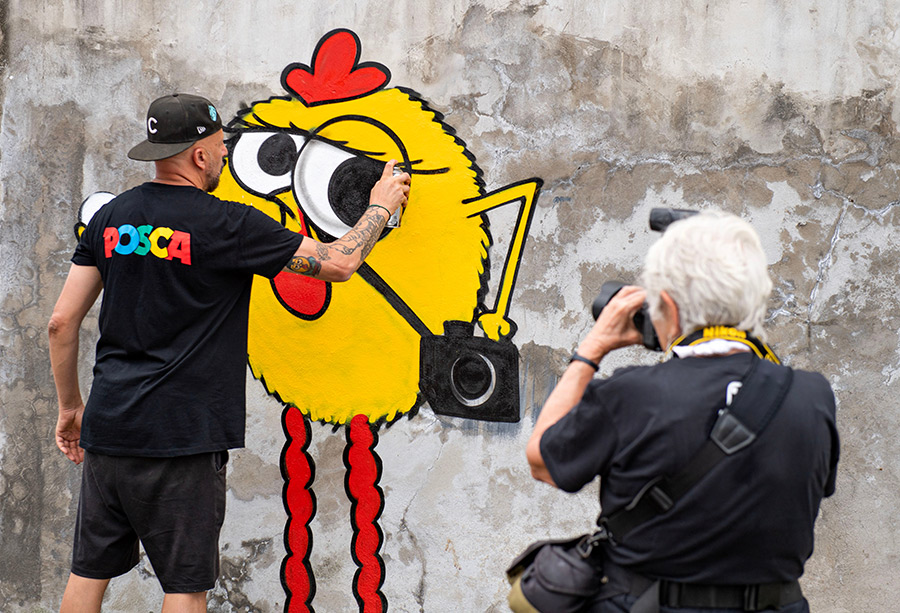
From an interview with Nika Kramer, Ceet talks about his life in China and how his chicken character developed.
“So the first time I saw graffiti was in about 1983-84. I began painting in 1988, but my participation with the culture before that was break dancing.”
Nika Kramer: How did you get into the chickens?
CEET: My chicken story started 22 years ago in China. I was in Shenzhen. I couldn’t speak Mandarin, and the Chinese couldn’t speak English, so we had a big problem communicating. So I started to draw everything: what I was doing, everything I wanted to eat, everything I wanted to do. I started to draw everywhere. And I communicated like this for the first time.
And then, step by step, I learned Mandarin. And I live in Hong Kong. Why? Because a company brought me to China to do graffiti work. I came one time, two times, three times, and I stayed longer each time. One day I got the apartment and I stayed there and I lived there. It’s very simple. I like to live there because it is amazing. Many people respect me. I learned a lot about how to paint graffiti using brushes, oil, and sculptures, and I started to have very nice connections with the many people there. This is how I matured my art practice and now and I put my chickens everywhere.
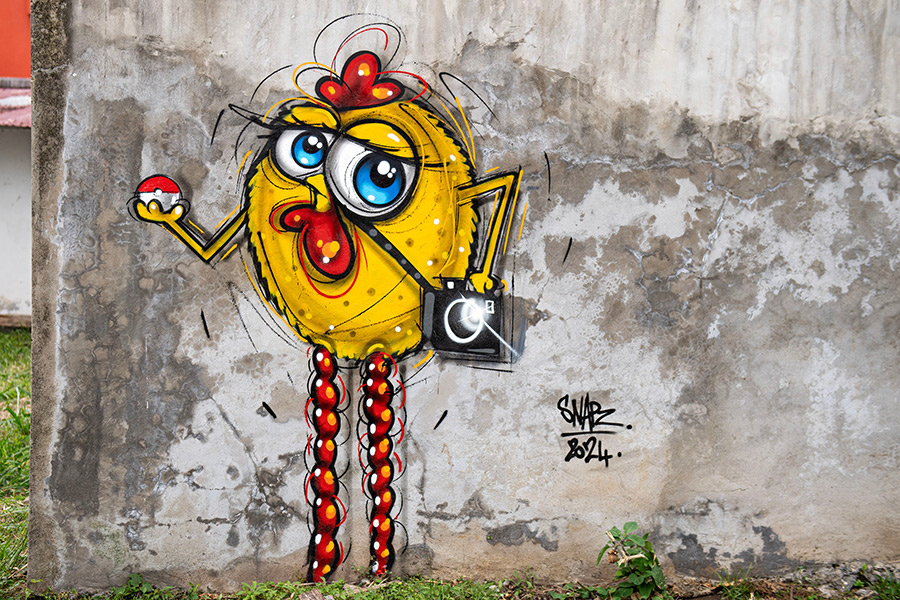
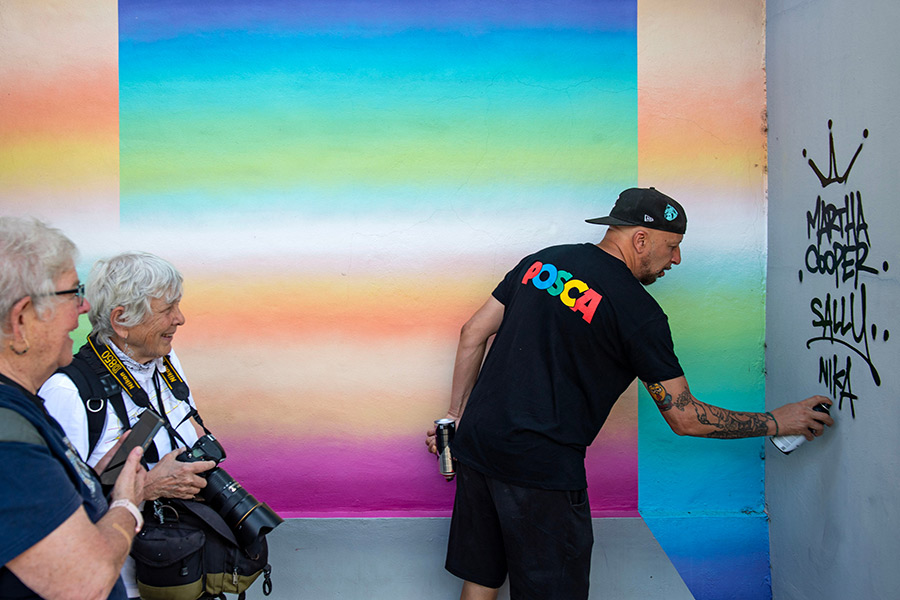
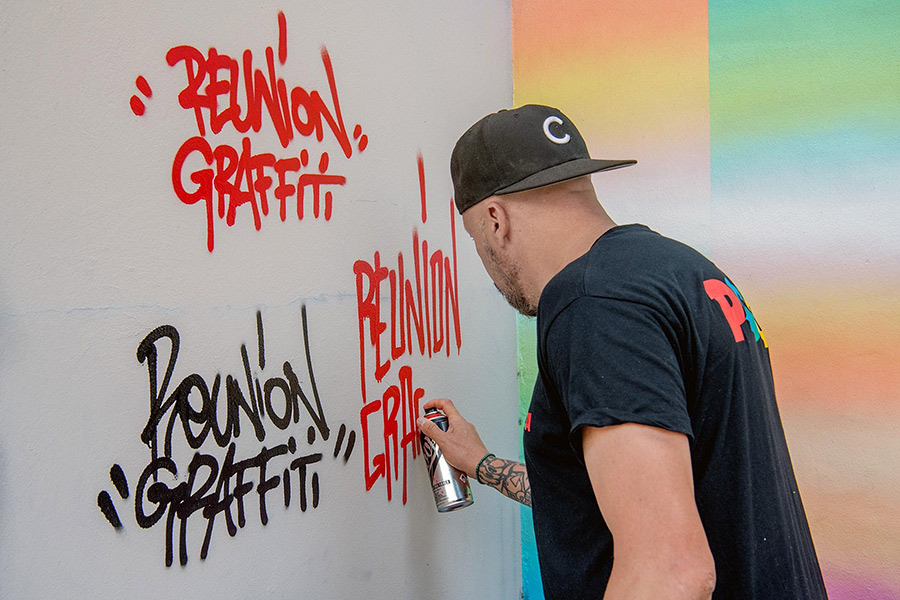
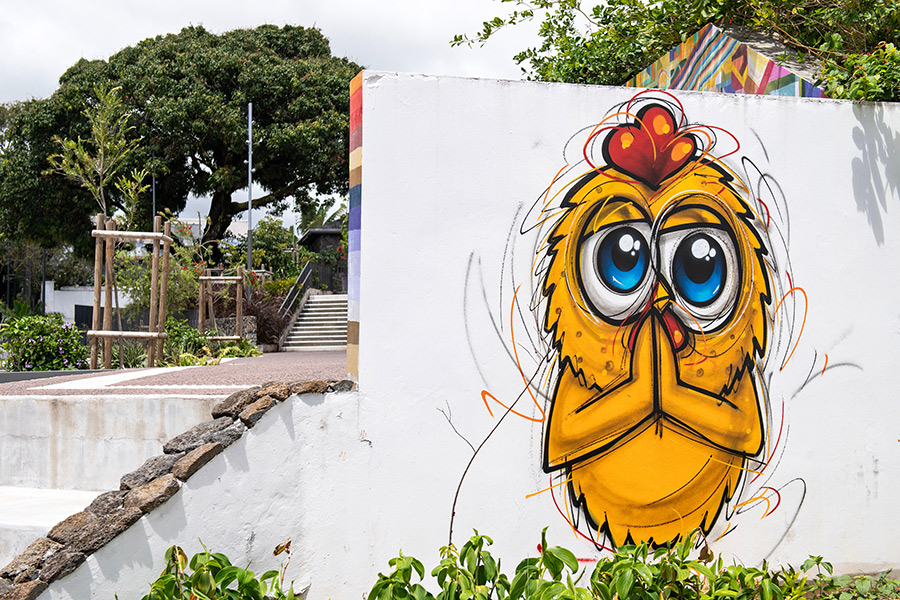
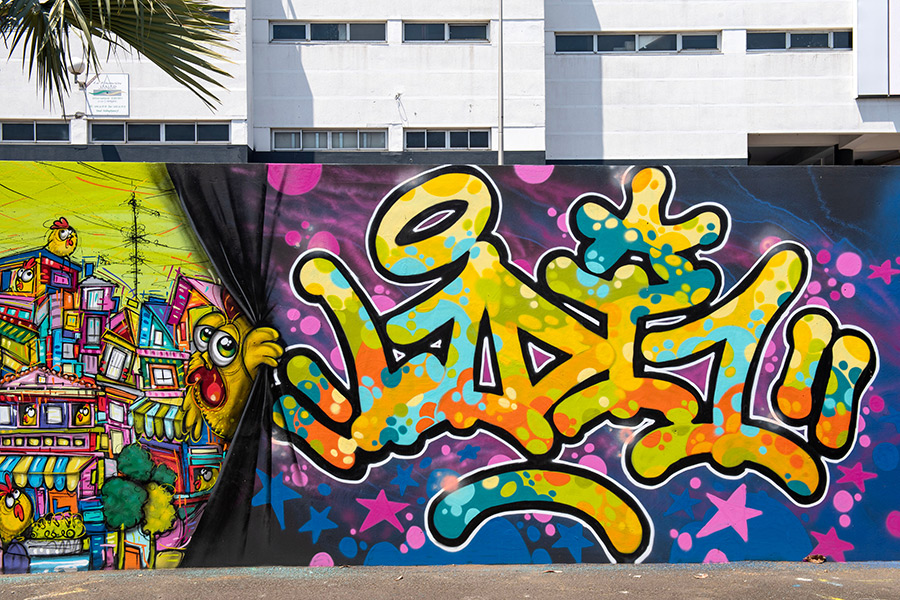
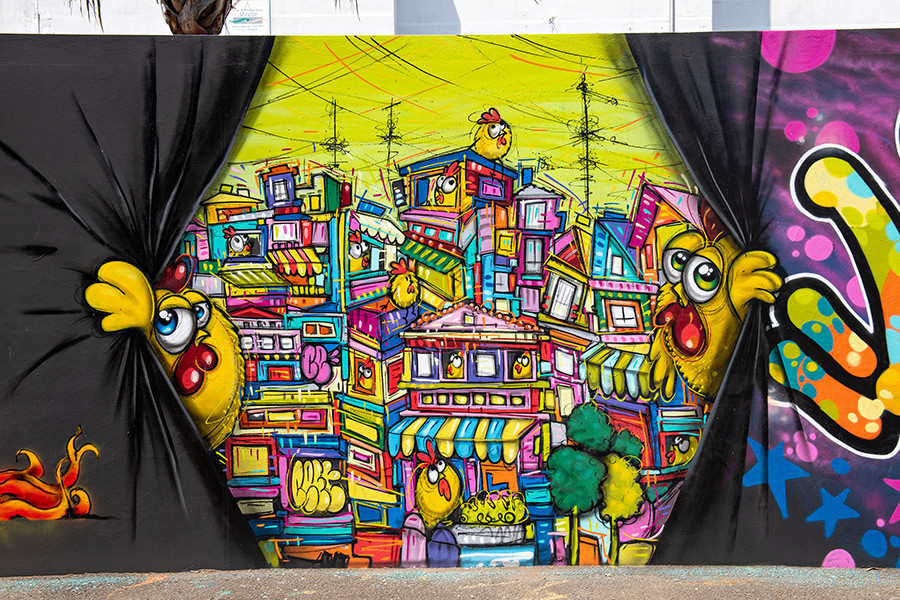
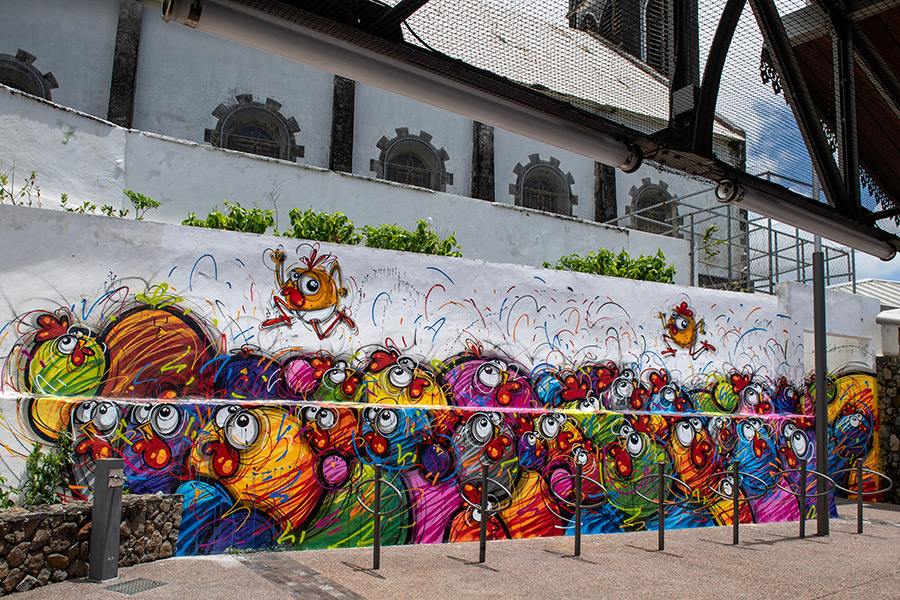
 BROOKLYN STREET ART LOVES YOU MORE EVERY DAY
BROOKLYN STREET ART LOVES YOU MORE EVERY DAY
